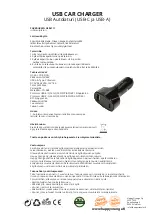
2
The handlebar, the part you hold with your hands when riding a bicycle, is
primarily responsible for your ability to steer and control the bike. In addition, the
handlebar works with the seat to define your posture on the bike, adding comfort
and efficiency to your cycling. The handlebar is connected to the bike by the stem.
This section explains how to inspect, adjust, and install your handlebar and stem.
Inspect your handlebar regularly
As with anything mechanical, every part of a bicycle has a limited useful life
due to wear, stress, and fatigue. Fatigue refers to a low-stress force that, when
repeated over a large number of cycles, can cause a material to fail or break.
The length of the life of a part varies according to its design, materials, use, and
maintenance. Although lighter parts may, in some cases, have a longer life than
heavier ones, it should be expected that light weight, high performance parts
require better care and more frequent inspections.
Regularly inspect your handlebar for signs of fatigue stress: dents,
cracks, scratches, deformation, or discoloration. Large forces can
accelerate the fatigue of a material. As an example, a crash may
add a great deal of extra stress to your bike. As with this example,
jumping your bicycle, performing bicycle stunts, severe off-road
riding, downhill riding, or any abnormal bike riding also increase
the stress on every part of your bike. If you choose to jump your
bicycle, use it for stunts, or use it in a severe off-road or downhill
environment, or ride it after a crash, carefully inspect your
handlebar for signs of fatigue before and after each ride.
If you are unsure of the safety of your Race XXX Lite handlebar,
do not ride the bicycle; take the bicycle to your dealer for adjust-
ments. Even if you perform regular inspections, be aware that if
you exceed the limit of strength of a given part, it will fail.
Once a month
make sure the stem is in alignment with the front
Once a month
Once a month
wheel. Test the stem connection to the fork by attempting to turn the
handlebar from side to side with the front wheel locked between your knees (Figure
2). Test the security of the handlebar by attempting to rotate them in the stem.
Make sure that no cables are stretched or pinched by rotating the handlebar.
Check that all bolts are tight. The correct tightness varies according to the
type of stem on your bike. Check your bicycle owner's manual for these specifi-
cations. If you are unsure how to tighten these bolts, consult your dealer.
Only use correctly installed bar-ends
Improper clamp design can crush or damage the handlebar.
Do not attach bar-ends that use an internal, expanding clamp
mechanism. Bar-ends that attach to the outside of the handlebar
must use a clamp mechanism that is designed with the clamp slot
radial to the clamp center, with the bolt perpendicular to the slot
and as close to the handlebar as possible (Figure 3).
Do not over-tighten the bar-end clamp. The clamp only needs
to be tight enough to prevent rotation on the handlebar. Over-
tightening can crush or damage the handlebar.
WARNING
An improperly adjusted or tightened handlebar, stem, or bar-
An improperly adjusted or tightened handlebar, stem, or bar-
ends can cause you to lose control and fall. Make sure the
ends can cause you to lose control and fall. Make sure the
stem, handlebar, and bar-ends are positioned and tightened
stem, handlebar, and bar-ends are positioned and tightened
properly before riding the bike.
properly before riding the bike.
Figure 2 Function test the
Figure 2 Function test the
handlebar and stem
handlebar and stem
Figure 3 Bar-end bolt perpen-
Figure 3 Bar-end bolt perpen-
dicular to hole radius
dicular to hole radius






















